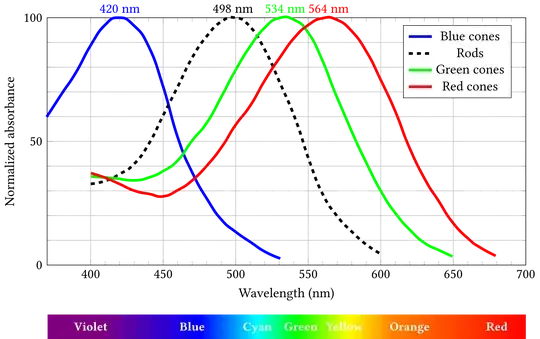I'm learning about the trichromatic theory of color perception. Say a receptor detects a wavelength $\lambda\in\mathbb{R}$ and responds with $f(\lambda) = (r,g,b) \in \mathbb{R}^3$. This system is supposedly linear, so $f(n\lambda_1+\lambda_2) = nf(\lambda_1) + f(\lambda_2)$. However it is emphasized that the addition and scalar multiplication of wavelengths (left hand side) are not the "typical" ones on real numbers, and instead bear some physical meaning. The "addition" is really a simultaneous detection of two light sources with different wavelengths, and the "scalar multiplication" refers to a multiplied quantity of light at that wavelength.
My question is if this is contortion of the definition of linearity. If not, what vector space would $\lambda$ inhabit and would we need to supply a new addition definition for it?
Edit: I was asking specifically about linearity, if it's valid in a loose sense, and how to make it valid in a strict sense. I was already mostly knew the contents of the proposed duplicate post.
